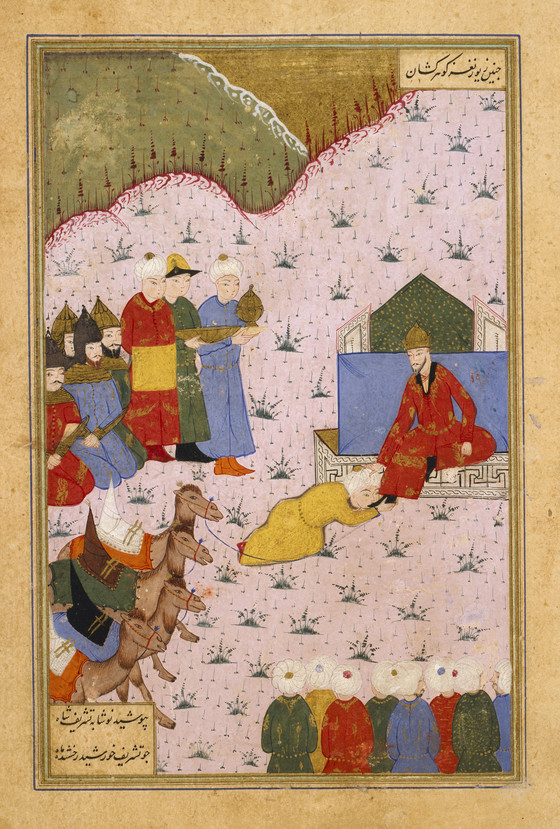...
Folios such as this, which include both text and illustration, frequently survive as orphans from the manuscript for which they were made and from which they were often intentionally removed. In this instance, the folio was very likely detached from a manuscript of the Khamsa (Quintet) of Nizami; both were once in the collection of the Kevorkian Foundation, New York, and were sold in two different sales in 1976 and 1980, respectively. The Khamsa manuscript, now in the British Library (Or.13948), contains only three of the traditionally five-part poem, including the Iskandarnama (Book of Alexander). The text from the LACMA page is from the Iskandarnama and belongs to a chapter on the Feasting of Iskandar with Queen Nushaba, although this does not appear to be the subject of the painting in which a youth prostrates himself before a ruler in a mountainous setting; rather, a textual notation indicates it is meant to represent Iskandar in the Alburz mountains. The text on the verso continues the chapter and begins the next chapter on Iskandar’s travel to Alburz.
The identification of the LACMA page with the British Library manuscript allows for a deeper understanding and a greater sense of context for the detached folio. The Khamsa manuscript preserves six illustrations reflecting an early sixteenth-century Ottoman style of painting. The text and illuminations, however, strongly suggest that the manuscript was copied in late fifteenth-century Herat, then a great center for Persian art. The unfinished manuscript, in which blank spaces were left for illustrations, would have eventually found its way to Istanbul, facilitated perhaps by the transference of artists and manuscripts from Herat to Tabriz in 1510, followed in 1514 by the Ottoman occupation of Tabriz, from which they took away skilled artists and booty. While the manuscript’s illustrations reflect the influence of Persian painting, as in the rendition of the mountainous landscape and golden sky, the landscape is more simplified while compositions and figures are more linear and rigid, and rendered in a limited palette, in keeping with this early phase of Ottoman painting.
More...



